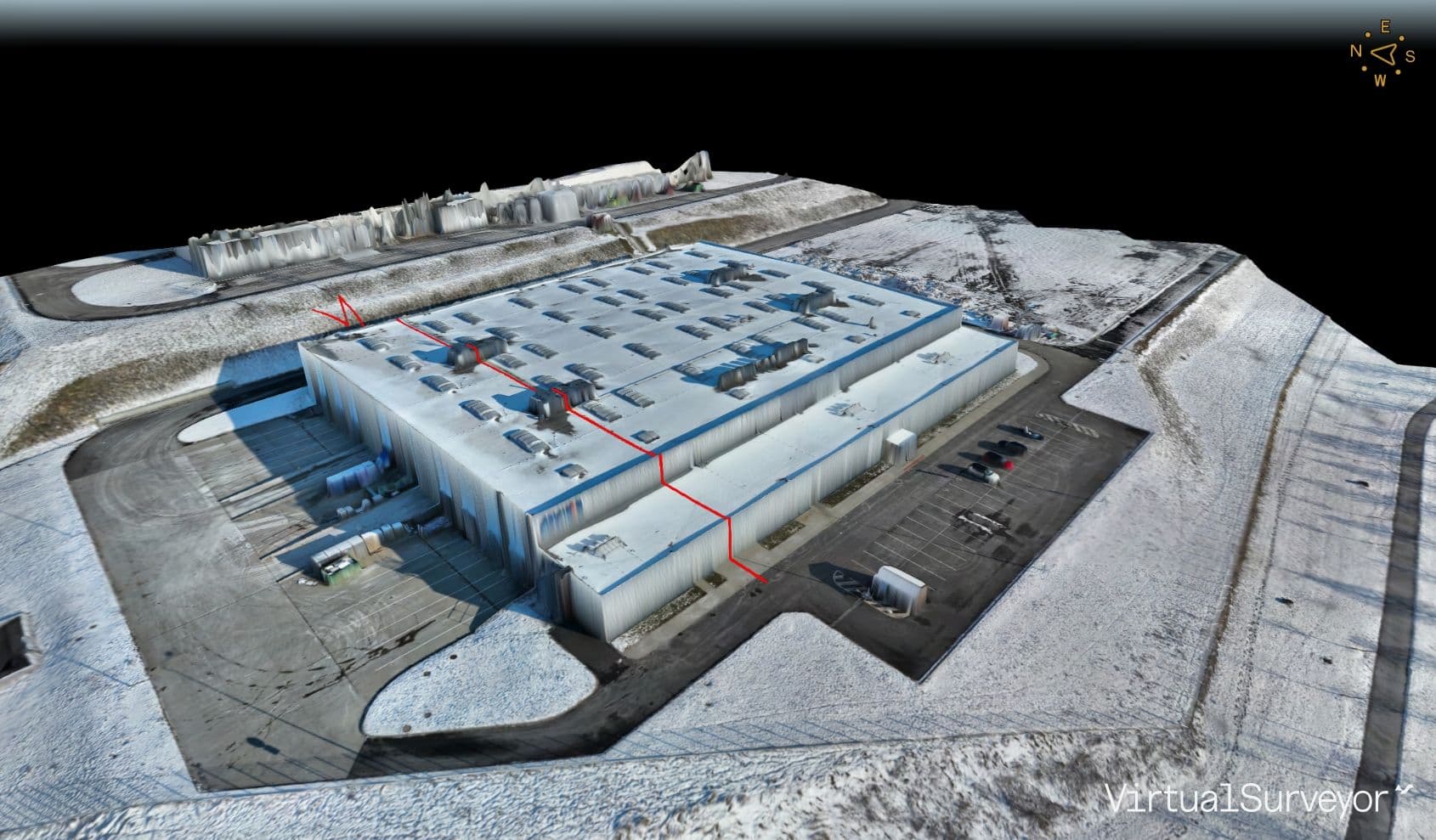Why is drone surveying necessary?
The condition of a property or roof can change dramatically since its last update, and it is rare to see projects where the owner has up-to-date documentation of the plot for PV, especially when it comes to rooftops. A drone allows for up-to-date data and accurate terrain information, which is essential for proper solar power plant design.

Advantages of drone surveying for PV construction
- Precise and up-to-date data: The drone allows you to obtain up-to-date and accurate data on the condition of the roof, which is crucial for the proper design and placement of solar panels. An example of a deviation in the documentation could be a newly installed air conditioning unit or a ventilation stack for a new facility inside the plant. By detecting these elements and changes, errors are minimized, and installation efficiency is maximized, all while still being ahead of time in the planning and drawing stages.
- Saving time and cost: Traditional roof surveying methods can be time-consuming and costly. The use of a drone allows the necessary data to be obtained quickly and efficiently without the need for expensive and time-consuming physical visits to roofs. The drone targeting itself usually takes a few tens of minutes. Algorithms and powerful computing then take over.
- Accurate image of the terrain: The drone can be used to create a topographical analysis of the land, which is crucial both for the design of the plant itself and for the manufacturer of the mounting systems to verify the design options. This expert work was previously carried out exclusively by surveyors and was costly.
- Pasportization: The drone can also be used to create an accurate 3D model of the buildings, including the roof structure. In the industry, this is called passporting. This model captures all the important details, such as attics, lightning rod routes, skylights, anchor eyes, etc. This then allows engineers and architects to accurately plan the placement of panels and optimize the performance of solar power plants. We are thus able to avoid surprises regarding the roof condition for all parties involved. In addition, this data can serve as a basis for revision engineers and other professions and is thus of great value beyond the design of the PV system.
- Thermal scanning: Using an infrared camera, the drone can detect a wide range of defects invisible to the eye. On roofs, for example, heat leaks or water absorption into the roof sheathing. After the photovoltaic system has been implemented, the infrared camera can easily detect defects in the panels or other parts of the plant. In the case of multi-hectare projects, this inspection is almost impossible other than by drone. An example is the detection of malfunctioning strings, which can result in hundreds of thousands of dollars in annual production losses.
- Safety and risk reduction: The use of a drone eliminates the need for physical access to the roof, reducing the risk of injury to workers and minimizing the possibility of damage to the roof or building elements.
- Flexibility and versatility: Drones are capable of sensing roofs of different types and sizes, allowing the application of this advanced targeting method to a wide range of buildings and sites.
- Environmental aspect: Using a drone instead of traditional targeting methods also brings environmental benefits as it minimises emissions and saves energy, which is in line with the sustainable development and environmental philosophy that Greenbuddies espouses.

Drone targeting as an innovative PV plant planning method with Greenbuddies
Drone targeting is a modern and efficient approach to obtaining the necessary data for solar power plant planning. At Greenbuddies, we like to work with modern methods and new technologies to push the boundaries of renewable energy and help clients efficiently achieve their energy goals with minimal environmental impact. The use of drones for rooftop surveying not only represents a technological advancement but also increases the efficiency and reliability of the solar planning and construction process, which ultimately benefits both clients and the environment.


